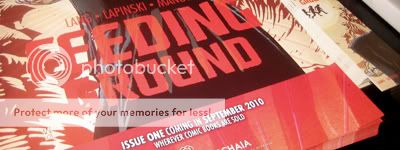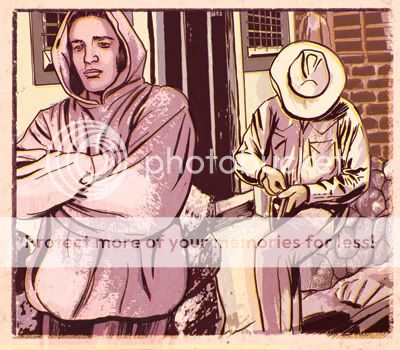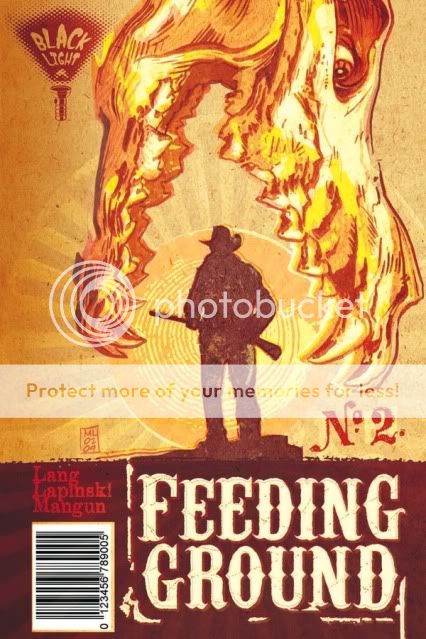
Although FEEDING GROUND doesn't come out until September, writer Swifty Lang and I were invited out to San Diego Comic Con by Archaia to sign posters at their booth, participate in the Archaia: All-Access panel, and enjoy the big show.
There was much to get my inner fanboy excited (the Walking Dead booth, TOYS!, all things Thor) but it was a great occasion to meet the extended Archaia family and talk with some of my favorite creators. Everyone could not have been nicer or more down to earth.




Some other highlights below:
- The Silkscreen Poster Art of Gary Musgrave and Jordan Crane. If anyone is ever looking to get me a gift, simply add all of them to your shopping cart. Such a vibrant aesthetic and powerful images that inspired me to push my FEEDING GROUND work even further. There is always something out there to remind you that you can always do more.


- The "Quickie" postcard and order slip art of David Palumbo. Dave's a meticulously talented fantasy painter but his looser ink work and figure studies have real life to them and show off how much he just "gets it."

- Constructive criticism from artist Steve Lieber (Whiteout, Underground). Swift and I were honored to start our Con by chatting with Steve and receiving a critique of our work. A student of The Kubert School and great comics in general (check out Alberto Breccia) he is the consummate comic storyteller with a full command of the devices of the medium. Whether the frozen wasteland of Whiteout or the flooding cave system of Underground, his site-specific environments were a major influence on how I approached rendering the desert of FEEDING GROUND.
 Some of his feedback:
Some of his feedback:1) Always draw each figure in a pose that creates a clean and interesting silhouette with clear information. For example, although I wanted the man below to be hiding the fact that he is removing bullets from the gun, I should have rotated the figure or camera so that the gun was free from his body and created a distinct outline.

2) Be wary of placing figures with different horizon lines and creating a tilted stage. Staging figures in a believable space is definitely a craft I am trying to work on.
3) Feel free to occasionally drop background information from the panel. Although I have been diligent about rendering and establishing a real space around the figures, removing it also allows breathing room and encourages the reader to complete the scene in their mind.
In the end, much appreciated and Steve was also cool to give us a shout out on Twitter calling FEEDING GROUND an impressive debut.
All said, what an incredible professional and fan-lovin' experience that few media can foster.
And, Thor helmets!











